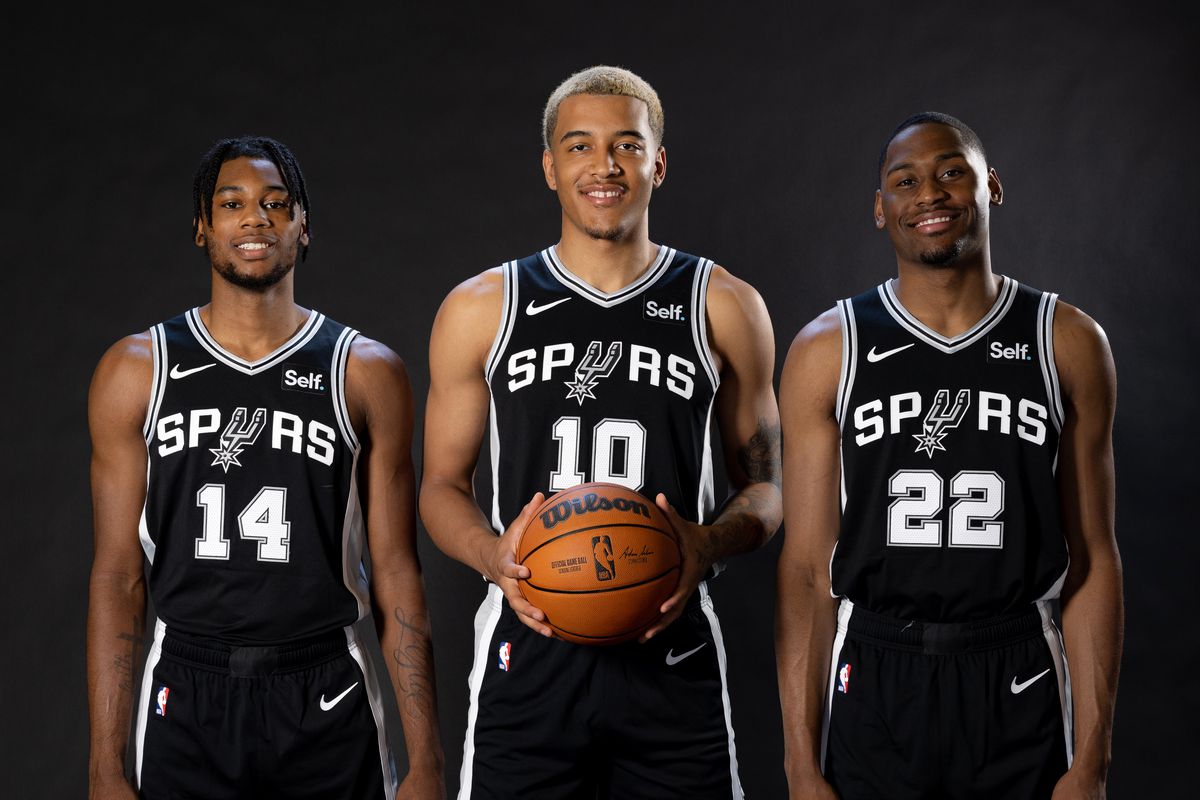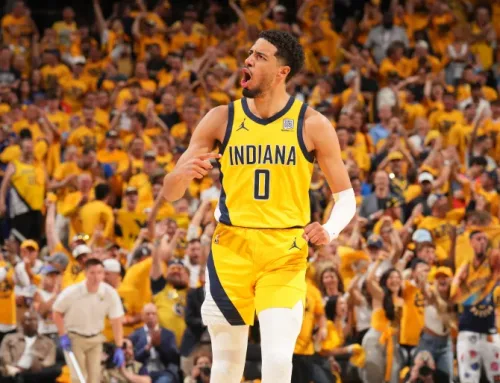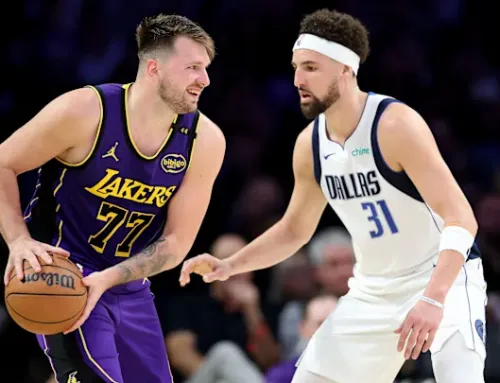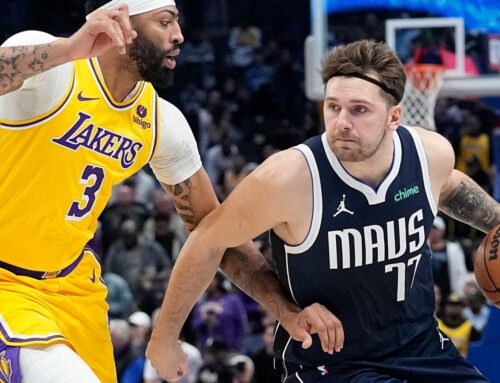By Avi Tyagi
Due to sample size concerns for many of the prospects within this sector of the list, I decided to hold off on publishing this piece until the full season mark. In the meantime, several of these rookies have earned opportunities with their NBA clubs and have improved during this formative stretch of their career. Here are the links to the first two pieces if you have the time and are so interested: https://notradeclause.com/an-early-rookie-report-on-avis-2022-nba-draft-big-board-top-20-part-1/ https://notradeclause.com/an-early-rookie-report-on-avis-2022-nba-draft-big-board-top-20-part-2/ Let me know what you think! On to the selections!
13. Jeremy Sochan
My Original View: Sochan is a fantastic, switchable defender in the mold of Robert Covington, but with the potential to be an on-ball stopper. The intermittent flashes of skilled ball handling and comfort as a 3 level scorer are engaging, but he’s not a particularly dynamic athlete on-ball. He can sky for dunks in transition, but not with the burst or flair to generate posters. While that sort of flashy athleticism is often overrated, in this case, I simply mention it as an emphasis of the sort of athlete he is. Among wings, he will be a forceful and powerful athlete with the verticality to block shots and be a small-ball 5 at times, but he cannot function as a true shot-blocker or sky through traffic. He reminds me a lot of Jarred Vanderbilt. While Jarred is rangier as a defender, Sochan’s offensive upside as a burgeoning secondary creator, instinctive passer, and back-line rim deterrent make him an appealing player on the whole. If Jarred could be the best defender on a playoff hopeful, it would not surprise me to see Sochan become a true starter in the league and one of the league’s most versatile defenders. His shot is a mess, but any team that drafts him has to be counting on development on that front anyways. In the midrange or on pullups, there are flashes of true consistency when he’s in rhythm, but it’s nowhere near consistent enough to profile as a consistent set shot.
Full Season Review: He’s translated about as well as I would have expected. I would have predicted more defensive playmaking (less than 1.5% on both his block rate and steal rate), but his funky one-handed free throw is better than I could have reasonably imagined. He seems like a perfect cultural fit for the Spurs. I anticipate his emergence as a pillar and tone setter for San Antonio. A Wemby-Sochan-Keldon frontcourt would be awesome.
14. Tari Eason
Tari Eason is a whirlwind of defensive intensity and offensive functionality on the court. Over a 2-year college career, Tari has a 6.7% block rate and 4.2% steal rate. That is nonsensical. It’s not fluff; he was far too athletic, active, and overwhelming for poor collegiate students. He’s going to uplift the home arena of whichever team he joins, with disruptive defensive plays and accompanying highlight reel dunks. Defenders were physically overmatched when Tari burrowed his way into the paint and his 51.5% free throw rate last season was earned. While I don’t anticipate Eason becoming a true shot creator, his motor is incredible and there are some easy fixes he can make. For starters, he needs more reps dribbling with his left hand. Defenders would ice him or play him to his left to a comical level and his loose handle often cost him opportunities to smash through more driving lanes. Even when he did manage to dribble past a defender towards his left, the wide angle he had to take to keep the ball securely within his reach would leave him stuck with nowhere to go. 41.6% of Tari’s shots were at the rim last season and his shot features an elongated windup. You know most of what you’re getting with Tari. The potential offensive refinements as a driver are what place him this high. The defense is phenomenal. It would not shock me to see him emerge as the defensive focal point and havoc creator for whatever team he joined within 3 seasons.
Full Season Review: Try as he might, even Tari Eason cannot save the apathetic Rockets defense. In an era where the talent level, schematics, and general effort levels amongst young rebuilds is higher than ever, the Rockets stand out as sore thumbs. Their games have been borderline unwatchable, unless you care to see what stat line an opposing player can get. The guards fall off when navigating screens and team box outs are infrequent. Even in these less than hospitable circumstances, Eason has been able to bring his role to the forefront defensively. The Rockets have only been outscored by 1.9 points per game with Eason on the court. That is the best mark by far of any Rocket to play more than 500 minutes. He offers versatile defensive playmaking and on-ball defensive pressure in a way that no one else on the roster really can. His finishing numbers have been poor, but he hasn’t exactly been fed the most premium opportunities in this current offensive ecosystem. There’s very little premium passing on the Rockets, so rookies like Eason and Jabari Smith Jr. who require set up plays to generate offense are often left adrift. His free throw percentage is still at 74% so that sort of stabilized number is a positive indicator for his shooting to some regard. All in all, while the Rockets are a tough watch, Eason is doing his part to try to make that not be so.
15. Walker Kessler
My Original View: Walker Kessler has two differentiating skills. His rim deterrence is a unique force. He will step into the league as a ready-made elite drop defender. Additionally, he is a wonderfully tenacious offensive rebounder, a sturdy defensive rebounder, and an effective finisher near the hoop. He can create shots on one or two dribbles with deep post positioning, and, frankly, that’s enough. The free throw shooting desperately needs to improve for Kessler to emerge as a defensive fulcrum earning starter’s minutes for his team. I appreciate his willingness to launch 3s, even if they feel a little misguided with his current form. If he can change his technique from mounting a catapult on his right shoulder to an actual shot form, maybe he will be able to venture further from the paint and still maintain a viable scoring arsenal. When you can protect the paint with the sort of command he already shows, you have the hallmarks of a wonderful pick this deep into the draft. The only questions here are about upside plays. Any minor shot mechanics tweaks would go a long way towards changing that.
Full Season Review: He’s an elite shot-blocker already. Opponents are shooting more than 13% worse within 6 feet of the rim due to his prowess in drop. He hasn’t been totally eviscerated out further from his home base either. The intelligent positioning and timing that make him such a good shot blocker have helped him adapt almost seamlessly to NBA ball-handlers. He has an 8.3% block rate (behind only Jaren and Biyombo of players to play over 700 minutes). He’s a rookie! That is absurd! Did I mention he shoots 75% at the rim too? He’s become a secure release valve and sure-handed lob target for the developing Jazz guards. Now, it just remains to be seen if he can add anything else. Regardless, this is a real NBA player, a top 5 player in this class with one of the best debuts at the center position in the last 6 seasons. On the team home to the finest shot blocker of his generation, Walker Kessler is now next up.
16. MarJon Beauchamp
My Original View: I really love Beauchamp’s offensive approach. In a G League environment that prompts most prospects to experiment past the point where reasonable shots are taken, Beauchamp makes everything simple. On every offensive possession, he cuts to the hoop at the right time and builds his offense in the paint. His athleticism has popped, even at the G League level and he can really elevate on dunks. The shot creation has only appeared in flashes and bursts in the G League atmosphere and his pullups appear too flat to be an NBA-ready shot. Due to his limited on-ball offensive role and lack of Division 1 college tape to refer to, MarJon is a difficult evaluation case. I went back and watched as much of his Yakima Community College tape as I could, but that did not feel particularly helpful either. At a lower level of competition, Beauchamp appeared unrealistically exceptional as an isolation driver. On one hand, it’s a good sign that his shot creation and handle scaled well to a lower level and appeared fluid during isolation attacks. On the other hand, the moments where he appears to be a big-wing Harden blasting his way to the hoop fly in the face of the majority of his G League tape. Therefore, I went back to try to find any tournament games from his AAU and high school career to determine the best possible understanding of where he has grown and what his strengths and weaknesses as an offensive player might really be. His capacity for shot creation and handle are both limited right now, but he makes up for it with positive impact as a cutter and transition finisher. The flashes still exist and portend for a potential upside as true wing scorer if he can repair the arc on his jumper and advance his handle. At the same time, it’s worth remembering that only 37% of his shots originated outside of the paint in the G-League, and most of his paint touches were not self-generated, but rather smart cuts and off of offensive rebounds. Even as a driver, he’s not shown the consistent explosiveness needed to generate touches deep in the paint for potential kick outs or fouls drawn (he’s sporting a meager 13% free throw rate). In the meantime, he’s a solid positional defender, acceptable secondary passer, and a capable closeout attacker if need be. He’s an intriguing lottery play who may just prosper if honed in the right system.
Full Season Review: He’s just not in the picture. Milwaukee has cultivated a very competitive depth chart and has not actively prioritized providing developmental minutes to its first-round rookie. With such little runway, MarJon has barely made himself heard this season. In truth, he’s been such an ancillary figure within the deep Milwaukee rotation that I almost don’t have much more to add. I’d like to check back in next season before I make any stronger judgements. His shot making opportunities and 3 point rate have been much higher with Milwaukee and his flashes of off the dribble creation ability are as interested as ever. Year 2 will be important for him. As the only long-term contract under 27, MarJon is the sole developmental focus for a Bucks’ franchise looking to extend their contention window around Giannis. They will be hoping MarJon can break through and add a new element to their roster build. To get on the floor, he needs to improve his physicality first and to become an effective short roll passer or 3-point shooter. Either enhancement will get him on court reps by which he can slowly earn his way onto the court. Milwaukee won’t hold his hand and could easily trade him for reinforcements over the summer, but he will get a chance.
The fourth grouping: Prospects 17-20.
This is quite an eclectic bunch. The long list of potential candidates was certainly difficult to sort through. After considering at least 10-15 names for the final four spots, Terry, Agbaji, Branham, and Liddell stood out as upside plays. Many of the other candidates profiled to me as suiting one of four categories.
- Inefficient shot creators who lack the requisite burst or skillset to generate separation or shot making efficiency at the next level
- Potential 3 and D types with some ball-handling or passing acumen or a propensity to shoot but with some question marks about their offensive viability, shooting touch and/or lateral quickness at the NBA level
- Pure 3 and D types without any additional self-creation who are low volume shooters on around average efficiency
- Bigs who have yet to showcase a differentiating factor, either with defensive versatility or with the ability to self-create advantages with the ball in hand with some frequency
At the same time, it would not be accurate to say that these four took these spots by default or in any ways meant to diminish any of the unappointed candidates. Each of these four stood out from the pack in unique fashions and framed the appeal of their own candidacy.
17. Dalen Terry
My Original View: A perfect complement to Mathurin at Arizona under Tommy Lloyd, Terry is a ferocious defender, an explosive finisher, and an adept secondary passer. He’s a low-usage offensive creator, but the appeal here is predicated upon catalyzing his nascent on-ball skillset. He might not score enough to see the floor much early on and his jump shot is a work in progress that would initially limit many on-ball reps, but with developmental opportunities, any progression with his dribbling and on-ball scoring would provide him the runway to highlight all his other strengths. I’d love to see him on an electrifying, transition-oriented team, similar to Ziaire Williams with the Grizz last year.
Full Season Review: Year 1 has gone as I would expect. He’s not an NBA-caliber offensive player this year but that should not have been envisaged. In a small sample size in the big leagues, the extra passing and defensive ball pressure have translated as expected. The Bulls’ backcourt is already crowded, so minutes may be hard to come by even next season. The Bulls’ patience for Terry’s growth is undetermined at the moment, but either with Chicago or with his next team after an offseason trade, Terry is an intriguing developmental prospect.
18. Ochai Agbaji
Ochai is here for one reason: his prowess as a 3-point shooter. Unlike many collegiate elder statesmen, Ochai did not remain in college because he was a late bloomer in any way. For Ochai, it’s been about catching his skill up to his athleticism. It’s been a success. As the primary scoring option for the National Champs, Ochai launched 10.7 3s per 100 possessions on a variety of different set ups and scored a scorching 40.6% of them. He’s not an uber-athlete in a half court setting, with average burst and average lateral agility. He does have noteworthy hops in transition however and can be counted on to finish very effectively on cuts to the hoop. Ultimately, semi-athletic wings who are capable of playing on the court defensively and can reliably can 3s from a variety of different setups in the way Ochai can are befitting of a pick within this range. I don’t see him as reliably shooting 40% from 3, but even as a 37% shooter, I appreciate his ability to hit 3s after sequences of movement. That is different from the Korver, Klay pure on-the-move 3-point shooter without having to settle for a momentary full stop, but is still a skillset that most wings don’t enjoy. It might be too much to ask for improvements to his dribble, but if anyone is capable of polishing skills, it’s Agbaji.
Full Season Review: The raison d’être for Ochai Agbaji minutes on the Utah Jazz would be because he can fit smoothly as an option to catch and shoot off ball, attack closeouts and get to the rim, and make sharp cuts as a roller or out of corners to keep defenders honest, all while being a tangible defender and serviceable passer who won’t stall the offense. Agbaji has been all of that. Utah is the perfect fit for him; they’ve apportioned developmental minutes to help him gain comfort at smoothly running into 3s on off-ball sets and the results have been great. Within another year in the league, even if his further physical maturation is likely to be lesser than that of his peers, if he can grow more comfortable as a finisher and physically build into a stouter small forward, he is set to be an important contributor for the next era of Jazz basketball.
19. Malaki Branham
My Original View: He’s an incredibly crafty mid-range maestro with excellent shooting touch who needs to progress as a defender and push his shot-taking comfort zone beyond the arc. He probably should not be asked to slash to the rim due to a weaker first step and his lateral agility is a major issue out at the perimeter. This is still one of the best shot-makers in the class, particularly from mid-range. Several college scorers who have missed this big board do not sustain efficient shot-making in the midrange with face ups in the way Branham can. The free throw numbers (83%) confirm the makings of a true shot maker. On the right team, with consistent reps, he can grow more comfortable at using his size to guard slower, bigger wings and avoid the troublesome perimeter matchups.
Full Season Review: He’s been as expected. San Antonio has experimentally doled out minutes as a nominal point guard to Branham and he’s performed reasonably in those opportunities. His 3-point rate has ticked up at the NBA level as he’s grown more comfortable with shot creation from further out. While his overall true shooting percentage is down at the moment, it’s being anchored by a 30.6% mark from 3. I don’t anticipate a continuation of that trend going forwards and even penciling him in as a 37% 3 point shooter would bump his true shooting percentage to 57%. For a scorer who does not project to become a driver or rim finisher, his 2-level scoring may be effective enough to make him a plausible offensive force. As he matures physically and grows craftier, it would be nice to see him take advantage of closeouts to generate more drives or to draw fouls (since he currently sports a slight 11.6% free throw rate). Branham’s main undertaking will be overall defensive improvement. He’s not an NBA-caliber perimeter defender at the moment and that will have to change for him to approach a true ceiling as a starter. He will either have to bulk up enough over time to be comfortable guarding smalls or slowly but surely improve his lateral quickness and timing to generate some on-ball deterrence at the point of attack. Within the Spurs’ system, I would anticipate rotations, help responsibilities, and technique to be sorted out and perfected over time. Athletically, he will have to meet them half-way. If he can do that, his rookie season so far has offered promising signs on offense.
20. E.J. Liddell
My Original View: The last spot on my big board once again goes to a big in a class with incredible depth at the position. E.J. might not be for everyone, but he is such a fascinating prospect that I feel compelled to place him here. He’s such a smart rotational 4 and can likely play small-ball 5 in the right matchups. For a player who profiles as a below-the-rim finisher as a power forward and likely won’t feature as an elite shot creator in the league, he accomplishes everything else at a tremendous level. He launches from the perimeter, he’s instinctual as a help-side defender, and he generates easy trips to the line with the ferocity of his physicality. The right team that can help him smoothen out his shot and speed up its release can find itself with an elite 3 and D power forward, capable of functioning as a post hub and attacking closeouts with occasional face up attacks.
Early Season Review: Get well soon EJ! The Pelicans have had about as strong of a two draft stretch as you could possibly have. I can’t wait to see what sort of magical shooting touch Fred Vinson equips him with by 2024.





